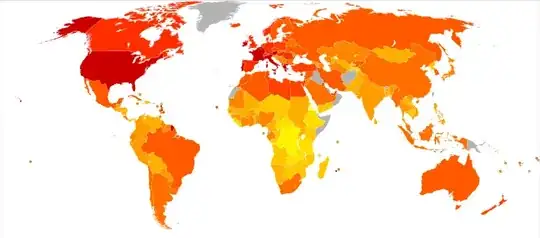This question is a very contentious one as it relies upon a lot of variables that are largely poorly understood.
The first part is arable land mass.
Currently animal production is focussed on either high value grazing areas or low value extensive areas. Extensive grazing areas cannot be cropped. That area of production would have to be made up by increased crop production in other areas. 56% of Australia is extensive agriculture, worldwide it is ~5,000,000,000 hectares. That is a large amount of low production land to make up for.
http://www.nature.com/nature/journal/v478/n7369/full/nature10452.html
"Simply put, we can increase food availability (in terms of calories, protein and critical nutrients) by shifting crop production away from livestock feed, bioenergy crops and other non-food applications..... But even small changes in diet (for example, shifting grain-fed beef consumption to poultry, pork or pasture-fed beef) and bioenergy policy (for example, not using food crops as biofuel feedstocks) could enhance food availability and reduce the environmental impacts of agriculture."
Also, the areas quoted vary so much, because the figures are not fully understood. Cropping land is rarely cropped every year, instead rotated or rested at intervals, dependant upon crop type, soil type and amount of water/rainfall. Some countries just don't have accurate records.
The second part is feed conversion.
There are methods, such as mixed enterprise systems (crops plus grazing) and of course feedlotting that use grain feeding. The feedlotting is what people refer to the most, not understanding that cattle have a much higher energy conversion rate for vegetable matter than humans (being ruminants) and are not regularly fed for their entire lives. Thus grazing remains a large part of production.
Humans also preferentially eat higher protein foods like meat (see rise in meat demands from Asia with increasing wealth). This is because it is more calorically and nutritionally dense as a food, which is linked to satiety.
The third part is grain types.
Most grains that are fed to animals are what is referred to in the grains industry as "feed grains". These are generally lower quality grains that are unsuitable for human food production. Some of the grains used cannot be eaten by humans (e.g. lupins have high alkaloid levels that give both a bitter taste and become toxic when consumed regularly). Obviously the category of feed grain varies from "could be used" through to "cannot be used" for humans. This is once again a shorfall in the production required to replace meat in the diet. Remembering that feed crops are often grown where human crops cannot be grown, or not grown regularly (e.g. see wheat classes and agronomy).
These factors combine to create quite a different picture than what is normally presented in the "can we grow enough crops to replace meat eating" discussion. There would be less land available for cropping than is available for producing a mixed diet. There would be crops produced that would not be suitable for human consumption. We would also need slightly higher production or quality of crops to make up the energy conversion gap. This all makes for a large hole in the argument.
References:
Info on ME and DE for humans: http://fao.org/DOCREP/006/Y5022E/y5022e04.htm
This paper covers come of the conversion ratios for different animals that are grain fed (Cattle 7:1, Pigs 4:1, Chicken 2:1): http://ncbi.nlm.nih.gov/pmc/articles/PMC1240832
Another reference for the protein claims: http://sciencedirect.com/science/article/pii/S0301622699000196
